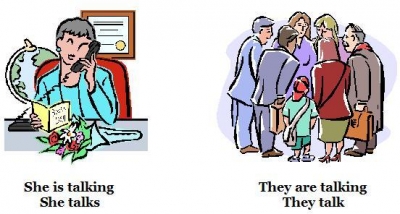
Some of us write simple straight sentences. Some of us prefer to use multisyllabic words (such as: integrative) and long sentences thinking, "When I know it, why not just use it?"
We use idioms to make a point and add colour to our writing. Look at the difference between "Don't go near that pond" and If were you. I wouldn't go near that pond. In short we all have our unique ways of writing. That's fine, as long as the reader gets the meaning and the purpose of your writing
What if you use words that are misleading or just plain wrong? It is good to make sure the words and phrases you use are precise, necessary and error free.
The following examples will help you avoid the pitfalls of writing without thinking properly.
Oxymoron
You have an oxymoron when two words opposite in meaning are expressed together. It is a figure of speech containing words that seem to contradict each other or cancel each other out. It's often referred to as a 'contradiction in terms
Oxymorons are used for a variety of purposes. Sometimes they're used to create a little bit of drama for the reader sometimes to add spice to the prose or poem; sometimes they're used for emphasis, or to make a person stop and think "Is this funny? Is this absurd?"
A common oxymoron is the phrase the same difference. This phrase is an oxymoron because the words same and difference have completely opposite meanings. Bringing them together into one phrase produces a puzzle
A true myth' eh? What do you make of that? Interesting, right? An oxymoron, as a figure of speech, is used in poems for emphasis. Shakespeare used these in his tragic play "Romeo and Juliet": loving hate, heavy lightness", feather of lead, 'bright smoke, cold fire', sick health'.
But if you use it without realising it is an oxymoron, it can lead to funny (read: absurd) phrases, that are best avoided. What is virtual reality? Who are paid volunteers?
Errors and effective phrases
Do you use the following in speech or writing? It's likely you have, or you may have heard of them.
Found missing, fully empty seriously funny, only choice. original copies, act naturally, clearly confused, deafening silence, farewell reception. growing smaller, open secret sweet sorrow, weirdly normal.
Writers have used oxymoron words and phrases to good effect. These examples, seen in their context will show us how this figure of speech can be effective not just as phrases, but in the meaning of the whole sentence.
I like a smuggler. He is the I only honest thief Charles Lamb
I can believe anything, provided that it is quite incredible. Oscar Wilde
And faith unfaithful kept him falsely true. Alfred Tennyson
Modem dancing is so old fashioned. Samuel Goldwyn
I am a deeply superficial person. Andy Warhol
We're busy doing nothing Bing Crosby
No one goes to that restaurant any more. It's always too crowded. Yogi Berra
A joke is actually an extremely really serious issue. Winston Churchill
I like humanity but i loathe persons. Edna St. Vincent Millay
I generally advise persons never ever to present assistance. P. G. Wodehouse
Avoid malapropism
Have you ever used the wrong word in the wrong context? Read more to find out how to avoid this mistake.
Malapropism is the act of using an incorrect word in place of one that is similar in pronunciation. Answer this: Which one is right?
The man is an imminent personality known for his books on climate change.
The man is an eminent personality known for his books on climate change. The word Malapropism comes from a character named Mrs. Malaprop in the play "The Rivals by Richard Brinsley Sheridan. The playwright Sheridan chose the name Malaprop because the word malapropos means inappropriate In the play. Mrs. Malaprop often used words that sounded similar but were wrong in the context. ("Illiterate him quite from memory instead of "Obliterate him") Malapropism is also referred to as Dogberryism, named after Officer Dogberry in Shakespeare's "Much Ado About Nothing". Both characters made these speech errors. Here are some examples of malapropisms: Mrs. Malaprop said, "She's as headstrong as an allegory (alligator) Officer Dogberry said, "Our watch, sir, have indeed comprehended two auspicious persons (apprehended two suspicious persons)
Picture Credit : Google



